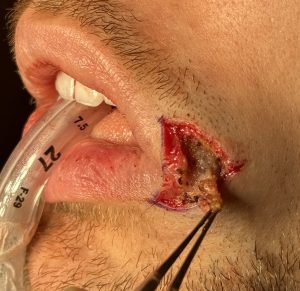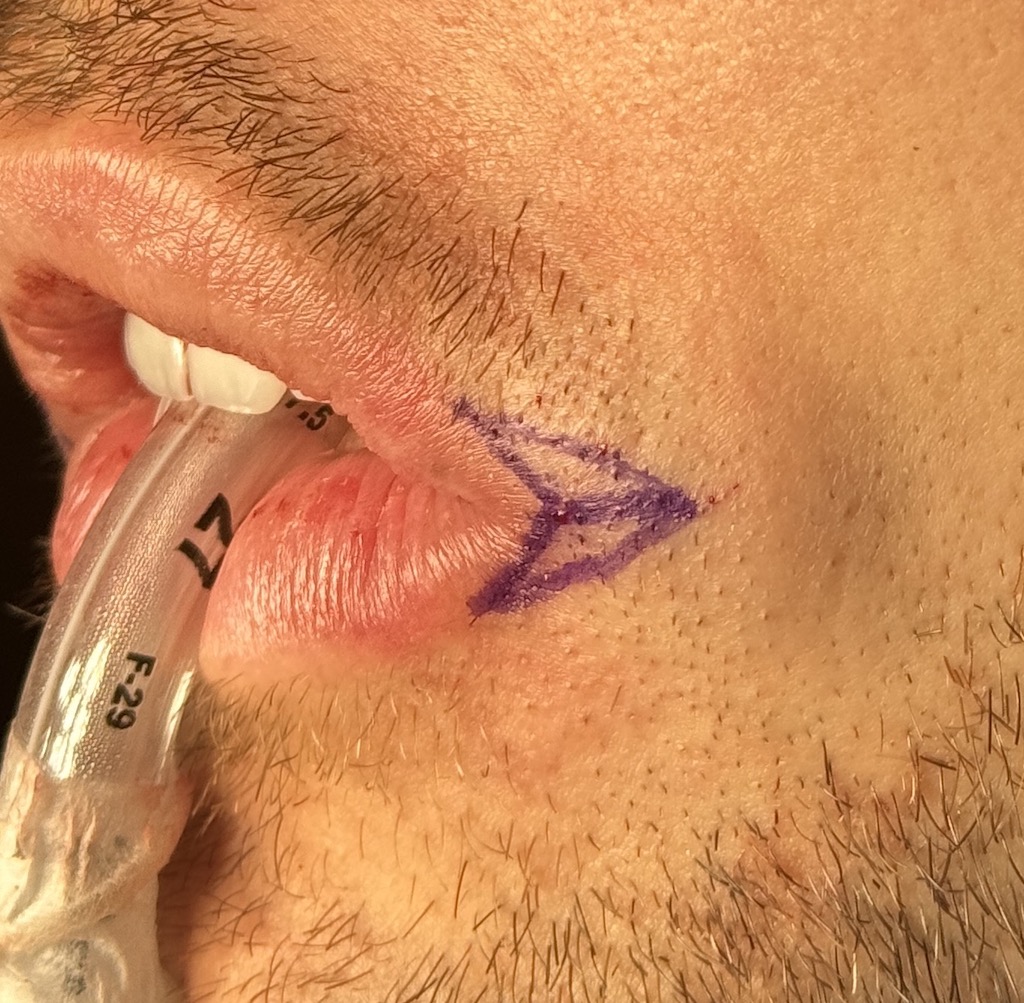There are many structures of the face which contribute to its shape and proportions. Some of these are seen by their vertical relationships while others are seen more by their horizontal dimensions. The lips contribute to facial appearance by both their vertical and horizontal size of the exposed dry vermilion. Many aesthetic treatments are available to increase the vertical size of the vermilion from synthetic fillers, fat injections, implants to surgical relocation of the vermilion-cutaneous border.
The horizontal size of the lips, also known as the width of the mouth, can only be changed by surgical relocation. The most common horizontal change in the size of the mouth is to make bigger or wider. By anthropometric measurements the corners of the mouth should ideally be at the width at a vertical line dropped down from the pupils of the eye. For those who like a Golden Ratio assessment the mouth width should be 1.6X the width of the nose. (bialar distance)



Mouth widening employs skin excision with the use of a well established tissue rearrangement technique oif Y-V advancement. It is more common to use the reverse, a V-Y advancement, in tissue reconstruction of skin defects. But the principle is the same in terms of tissue relocation/lengthening. The question with mouth widening is never whether it is effective but how does the scar at the mouth corners turn out. The vermilion at the mouth corners is uniquely different than that along the rest of the upper and lower vermilion-cutaneous border. It is thinner and is exposed to postoperative stretch that is greater than the rest of the vermilion border. So the risk of adverse scar formation is very real and one should always anticipate that secondary scar revision may be needed…but hope that it is unnecessary.
Dr. Barry Eppley
World-Renowned Plastic Surgeon



